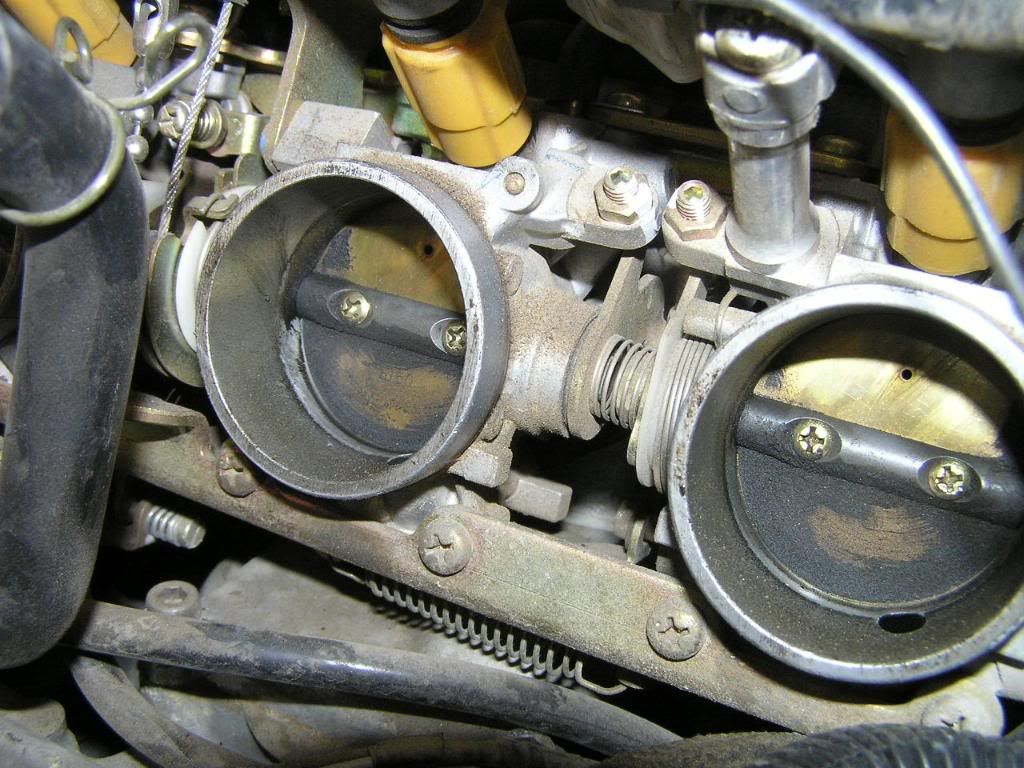HaulinAshe
Well-known member
I experienced a problem directly related to using the K&N High Flow air filter and Recharger system on my FJR.
First, let me stress that I have YEARS of experience with re-usable foam air filter systems in dirt bikes. I've cleaned thousands upon thousands of filters, using all types of cleaning and oil systems. I can read and follow directions too. That being said, here's what happened...
I definitely lean toward more filter oil rather than less. Under-oiling a re-usable air filter is about the last thing you ever want to do, especially when you live in sandy areas. Also worth noting is that I own two(2) not just one K&N air filter. So I've been cleaning one filter, allowing it to dry overnight and re-oiling the next day. Sometimes that filter may sit for two months before it gets placed in the bike. No rush jobs involved in filter maintenance, ever!
For several months I've been battling a problem with sticky throttle and abrupt off-idle throttle response. I've cleaned and lubed the throttle cable more times than I can count. I've polished the bar, cleaned the throttle tube, tried all sorts of throttle tubes and lube solutions. Nothing worked for very long.
Recently I ordered a new throttle cable and have been procrastinating installing it, due mostly to the obvious PITA extensive procedure required to hook that thing down low on the throttle body pulley. During my period of procrastination I observed a definite pattern to the sticky throttle. It was definitely thermal related with an odd tendency to be worse when the engine was hot and sometimes non-existent when cold. That just didn't make sense for a worn throttle cable (95,000 miles).
Once the air box was off, the true problem was clearly visible. Excess air filter oil had passed through the air box tubes and collected all along the pathways, collected against the butterflies, and gummed the chamber seat areas too. Along with the deposited filter oil was also some minor grime and dirt, which meant that the air filter wasn't catching 100% of everything and allowing some sizable particles to pass, DESPITE THE FACT THAT EACH FILTER WAS LIBERALLY OILED.
The extraneous air filter oil was thick, sticky and causing the throttle butterflies to stick at idle position. Spray cleaner, a toothbrush, some clean rags and a healthy dose of elbow grease cleaned up the mess. I went ahead and replaced the throttle cable since I'd done all that work to get to it, but it definitely was NOT the root problem.
What did I learn...?
The K&N air filter system, IMO, allows larger particles of contaminants to pass than the OEM filter. The K&N filter oil lacks sufficient tack when applied in a way that makes me personally comfortable with it's filtration level. And the big lesson learned... I'm going back to OEM filters on FJRs.
First, let me stress that I have YEARS of experience with re-usable foam air filter systems in dirt bikes. I've cleaned thousands upon thousands of filters, using all types of cleaning and oil systems. I can read and follow directions too. That being said, here's what happened...
I definitely lean toward more filter oil rather than less. Under-oiling a re-usable air filter is about the last thing you ever want to do, especially when you live in sandy areas. Also worth noting is that I own two(2) not just one K&N air filter. So I've been cleaning one filter, allowing it to dry overnight and re-oiling the next day. Sometimes that filter may sit for two months before it gets placed in the bike. No rush jobs involved in filter maintenance, ever!
For several months I've been battling a problem with sticky throttle and abrupt off-idle throttle response. I've cleaned and lubed the throttle cable more times than I can count. I've polished the bar, cleaned the throttle tube, tried all sorts of throttle tubes and lube solutions. Nothing worked for very long.
Recently I ordered a new throttle cable and have been procrastinating installing it, due mostly to the obvious PITA extensive procedure required to hook that thing down low on the throttle body pulley. During my period of procrastination I observed a definite pattern to the sticky throttle. It was definitely thermal related with an odd tendency to be worse when the engine was hot and sometimes non-existent when cold. That just didn't make sense for a worn throttle cable (95,000 miles).
Once the air box was off, the true problem was clearly visible. Excess air filter oil had passed through the air box tubes and collected all along the pathways, collected against the butterflies, and gummed the chamber seat areas too. Along with the deposited filter oil was also some minor grime and dirt, which meant that the air filter wasn't catching 100% of everything and allowing some sizable particles to pass, DESPITE THE FACT THAT EACH FILTER WAS LIBERALLY OILED.
The extraneous air filter oil was thick, sticky and causing the throttle butterflies to stick at idle position. Spray cleaner, a toothbrush, some clean rags and a healthy dose of elbow grease cleaned up the mess. I went ahead and replaced the throttle cable since I'd done all that work to get to it, but it definitely was NOT the root problem.
What did I learn...?
The K&N air filter system, IMO, allows larger particles of contaminants to pass than the OEM filter. The K&N filter oil lacks sufficient tack when applied in a way that makes me personally comfortable with it's filtration level. And the big lesson learned... I'm going back to OEM filters on FJRs.
Last edited by a moderator:

































































